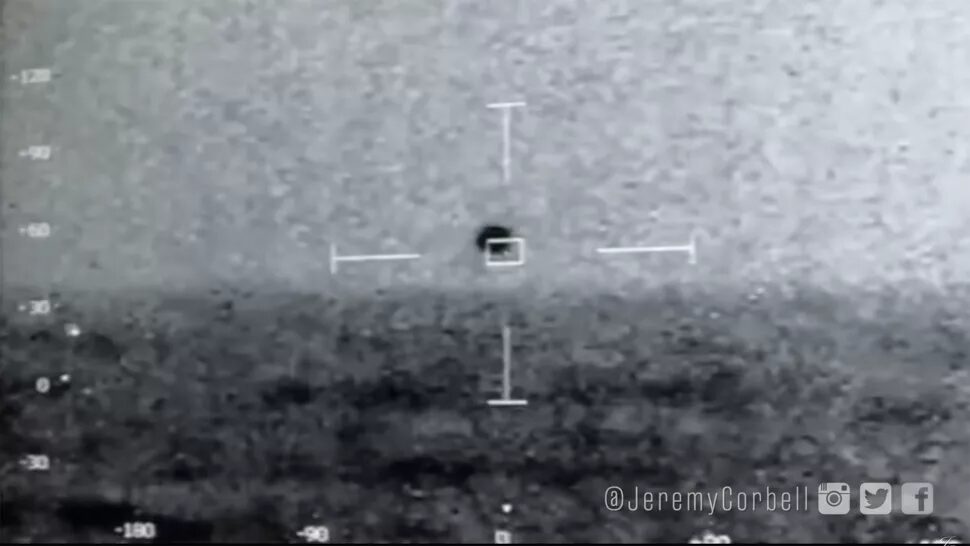
Experts involved in the study will dig up relevant data from sightings of unidentified aerial phenomena (UAPs); figure out how to best record such UAPs in the future; and determine how NASA can use the new information to improve scientific understanding of the mysterious objects.
The announcement of the new initiative, which is expected to start in early fall and take roughly nine months to complete, comes just over three weeks after a landmark Congressional hearing, in which lawmakers grilled two senior intelligence and defense experts on multiple reports by military pilots of UAPs, Live Science previously reported. The hearing focused on a June 2021 Pentagon report on 144 documented UAP sightings by U.S. Navy pilots since 2004, most of which the department concluded "probably do represent physical objects."
Of the 144 UAP sightings, 18 were reported to have extremely unusual flight behaviors, with the unidentified objects appearing to "remain stationary in winds aloft, move against the wind, maneuver abruptly or move at considerable speed, without discernible means of propulsion," according to the report. Released video clips, alongside eyewitness accounts from Navy pilots, also point to at least some of these ostensibly propulsionless craft moving at hypersonic speeds, Live Science previously reported; one video clip, captured by the U.S. Navy, appeared to show a spherical UFO hovering in midair while bouncing from side to side, before plunging into the ocean.
NASA's new study — which the agency says is not part of the Pentagon's Airborne Object Identification and Management Synchronization Group (AOIMSG) or its predecessor, the Unidentified Aerial Phenomena Task Force (UAPTF) — will be led by astrophysicist David Spergel and orchestrated by assistant deputy associate administrator for research at NASA's Science Mission Directorate Daniel Evans.
"Given the paucity of observations, our first task is simply to gather the most robust set of data that we can," Spergel said in a statement. "We will be identifying what data — from civilians, government, nonprofits, companies — exists, what else we should try to collect, and how to best analyze it."
The last time an extensive government investigation of UAPs (the preferred official term for unidentified flying objects, commonly called UFOs) took place in 1969, when a U.S. Air Force investigation called Project Blue Book ended by deeming that no unexplained flying object had been verified, and that none had ever been judged a threat to national security.
Then, nearly 50 years later in 2017, Politico and The New York Times dropped a series of bombshell whistleblower reports about the Pentagon's secret UFO research office. Those reports involved testimonies from the Navy pilots and radar crew who had encountered the strange aerial objects on an almost "daily basis."
In the wake of these reports, President Donald Trump included a requirement in the December 2020 Covid Relief Bill which mandated the director of national intelligence and the secretary of defense to produce a report on what the government knew about UAPs. Later, President Joe Biden also placed a requirement in the new National Defense Authorization Act, this time stipulating that the military create a new office to investigate UAPs, alongside producing an annual report and semiannual briefings to Congress.
The subsequent nine-page 2021 report and last month's public hearing were light on detail. Neither drew inferences from the "largely inconclusive" UAP accounts, and the report could only explain one of the sightings (which turned out to be a large, deflating balloon), saying that "we currently lack data to indicate any UAP are part of a foreign collection program or indicative of a major technological advancement by a potential adversary." The 2021 report also denied that the sightings were in any way linked to clandestine tests by the U.S. military.
NASA officials stressed that there is no evidence that UAPs are extraterrestrial in origin, although they are of interest to the U.S. government for national security and air safety reasons. Defense expert testimony at the May hearing described how UAPs had been involved in 11 near-collisions with U.S. military aircraft. The subcommittee also heard that some encounters have even been rumored to have taken place above sensitive nuclear facilities, such as an alleged incident at Malmstrom Air Force Base in Montana that saw 10 nuclear intercontinental ballistic missiles (ICBMs) rendered inoperable after a glowing red orb was seen overhead.



Reader Comments
[Link]